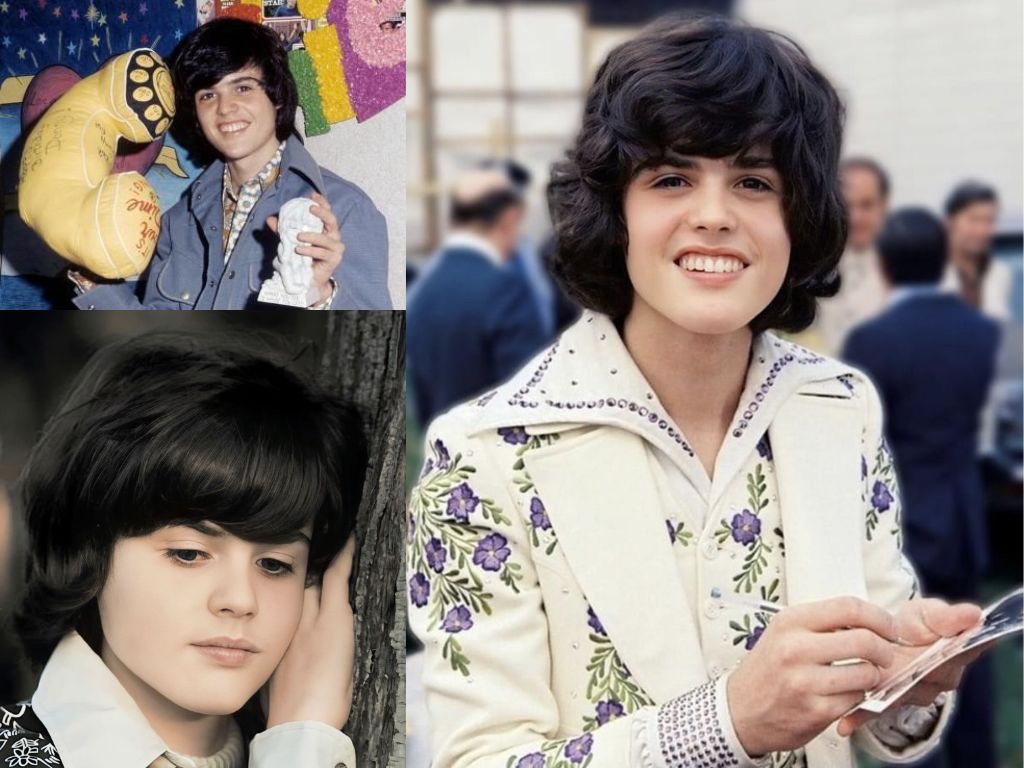
C’mon Marianne: A Timeless Plea for Love and Redemption
Ah, to cast our minds back to a time when pop music shimmered with an earnest innocence, and the airwaves were filled with melodies that, even today, can transport us to simpler, perhaps sweeter, days. It was 1974, a year that, for many of us, evokes memories of flared trousers, disco balls beginning to spin, and a certain fresh-faced star who captured hearts with his undeniable charm and silky voice. That star, of course, was Donny Osmond, and the song that beckoned us onto the dance floor, or perhaps just into quiet contemplation, was “C’mon Marianne.”
This track, a vibrant and somewhat melancholic plea, found its stride on the charts, reaching a respectable number 38 on the Billboard Hot 100. For a young artist like Donny, still basking in the glow of his earlier successes, this was another feather in his cap, proving his enduring appeal beyond the teen idol phenomenon. While not a chart-topper on the scale of some of his other hits, its presence in the Top 40 solidified its place in the pop landscape of the era and, more importantly, in the collective consciousness of those who grew up with his music.
The story behind “C’mon Marianne” is one that resonates with the universal theme of yearning for a lost love, a desire to rekindle a flame that, for reasons often left unspoken, has flickered and faded. Though originally a hit for the Four Seasons in 1967, Donny Osmond brought his unique interpretation to the song, imbuing it with a youthful sincerity that made it feel fresh and relevant for his audience. His version isn’t just a cover; it’s a reinterpretation that speaks to a slightly different generation, yet maintains the original’s heartfelt core. It’s the kind of song that makes you wonder about the “Marianne” in question – was she a real person, a muse, or perhaps a metaphorical embodiment of something precious that slipped away? For many of us, it became a soundtrack to our own youthful pangs of unrequited love or the quiet ache of a relationship gone awry.
The meaning of “C’mon Marianne” is beautifully straightforward yet profoundly resonant. It’s a heartfelt appeal, a desperate entreaty for a loved one to return, to give love another chance. The lyrics paint a picture of longing, of a speaker who deeply regrets past mistakes or misunderstandings and is willing to do whatever it takes to set things right. “C’mon Marianne, I know you think I’m wrong,” he sings, a simple admission that speaks volumes about humility and the willingness to acknowledge one’s faults in the pursuit of reconciliation. It’s a sentiment that transcends generations, for who among us hasn’t wished for a second chance, a do-over with someone we truly cared for? The song taps into that vulnerability, that raw human desire for connection and forgiveness.
Beyond its chart performance and immediate narrative, “C’mon Marianne” also holds a special place in the tapestry of Donny Osmond‘s career. It was featured on his 1974 album, “Donny,” an album that showcased his versatility as an artist and helped transition him from a strictly teen idol image to a more mature performer capable of delivering emotionally rich ballads and uptempo pop numbers alike. The song, with its slightly more sophisticated arrangement than some of his earlier bubblegum pop hits, hinted at the musical growth that would continue to define his long and varied career.
For those of us who remember the crackle of the radio dial, the anticipation of hearing our favorite songs, “C’mon Marianne” is more than just a tune; it’s a time capsule. It evokes memories of high school dances, first crushes, and the hopeful innocence of a bygone era. It reminds us of a time when the biggest worry was perhaps a misunderstanding with a sweetheart, and the greatest joy was a song that perfectly articulated those ineffable feelings. So, let’s take a moment, close our eyes, and let Donny Osmond’s earnest voice transport us back to a time when a simple plea, delivered with such heartfelt sincerity, was all it took to mend a broken heart, or at least, to dream of doing so.